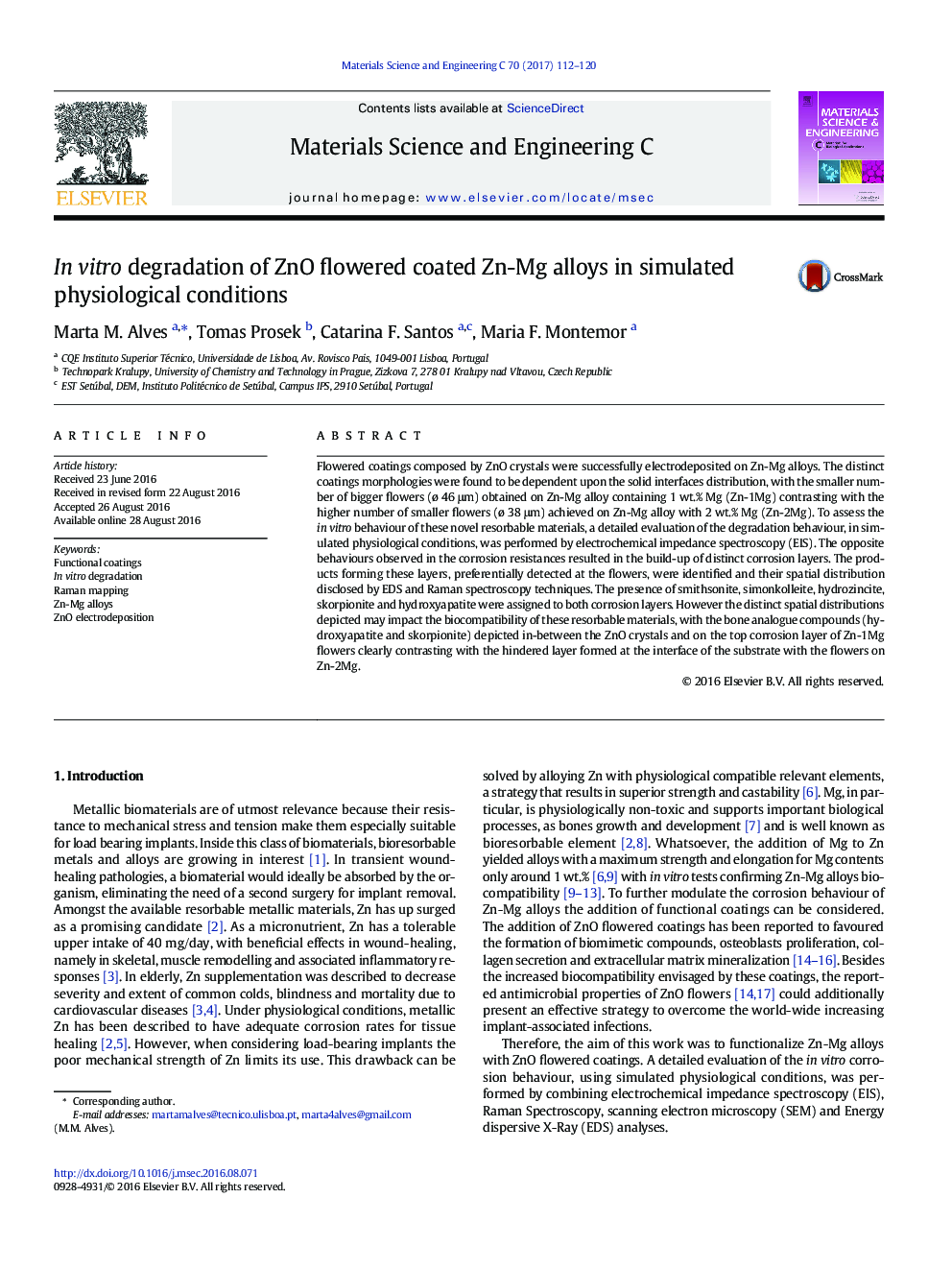| Article ID | Journal | Published Year | Pages | File Type |
|---|---|---|---|---|
| 1427813 | Materials Science and Engineering: C | 2017 | 9 Pages |
•Electrodeposition of ZnO-flowered coating on Zn-Mg alloys•In vitro degradation yield distinct corrosion products distributions at the flowers•A top distribution on Zn-1Mg flowers contrast with an interfacial one on Zn-2Mg
Flowered coatings composed by ZnO crystals were successfully electrodeposited on Zn-Mg alloys. The distinct coatings morphologies were found to be dependent upon the solid interfaces distribution, with the smaller number of bigger flowers (ø 46 μm) obtained on Zn-Mg alloy containing 1 wt.% Mg (Zn-1Mg) contrasting with the higher number of smaller flowers (ø 38 μm) achieved on Zn-Mg alloy with 2 wt.% Mg (Zn-2Mg). To assess the in vitro behaviour of these novel resorbable materials, a detailed evaluation of the degradation behaviour, in simulated physiological conditions, was performed by electrochemical impedance spectroscopy (EIS). The opposite behaviours observed in the corrosion resistances resulted in the build-up of distinct corrosion layers. The products forming these layers, preferentially detected at the flowers, were identified and their spatial distribution disclosed by EDS and Raman spectroscopy techniques. The presence of smithsonite, simonkolleite, hydrozincite, skorpionite and hydroxyapatite were assigned to both corrosion layers. However the distinct spatial distributions depicted may impact the biocompatibility of these resorbable materials, with the bone analogue compounds (hydroxyapatite and skorpionite) depicted in-between the ZnO crystals and on the top corrosion layer of Zn-1Mg flowers clearly contrasting with the hindered layer formed at the interface of the substrate with the flowers on Zn-2Mg.
Graphical abstractFigure optionsDownload full-size imageDownload as PowerPoint slide
